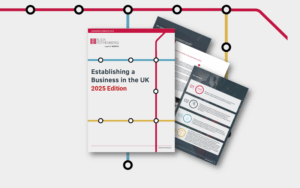How can the Government take the heat out of rising energy costs?
The debate over the impact of rising energy costs has intensified in recent weeks, with a number of smaller suppliers going bust and clear signals that the Ofgem price cap could rise by as much as 50% in April, adding about £700 to a typical bill
While it is clear that many people are going to struggle financially, it is less clear that using the tax system is the best way to cushion the blow.
The price of energy in the UK is not completely regulated. The overall supply chain consists of three key elements – generation, transmission and supply to customers. Generation is unregulated (and suppliers will choose their mix depending on the price available – for example, nuclear has high fixed costs and so is used for baseload, whereas hydro can be switched on quickly so is used when peak demand is high) while transmission is fully-regulated. Customer supply is generally competitive, but with the price cap set to ensure that prices are fair and that companies are required to pass on any price cuts to customers). However, because the wholesale price of gas has risen steeply, the next review of the price cap will reflect this.
Until a few days ago, the main calls were for the Government to abolish VAT on domestic energy – which it can do now that we are outside the EU and no longer limited to a minimum 5% rate. But doing this would cost around £1.7bn and would only save £61 of a typical £1277 bill, according to the BBC – rising to £100 if the bill goes up to £2000. This is both a small proportion of the total rise, and an inefficient use of funds since those with larger homes and higher bills would save more. As Rita de la Feria has pointed out, using specific VAT reductions is a poorly-targeted way of helping those at the lower end of the income scale, on three grounds: first, the cut will not necessarily be passed on in full; second, it benefits richer consumers more than poorer, and third, the cost is likely to be high compared to the individual benefits (. As she says, “there is now an overwhelming body of evidence against the use of exclusions from the VAT base to achieve social and distributional aims”. I made similar comments in my article last year. It would almost certainly be a more efficient tax policy to put the rate of VAT on energy up to 20% and use the extra receipts to provide targeted help to those who need it – but cutting taxes is always politically much easier than raising them.
More recently, the Labour party has put forward a comprehensive package of proposals. It would raise £6.6bn, mainly through a one-off windfall tax on North Sea oil and gas companies, and use this to subsidise bills by at least £200, with more for those on lower incomes. While Labour says its proposals are fully-costed, the windfall tax receipts appear optimistic given that total tax receipts from the oil and gas sector in 2019/20 were only £1bn, per the OBR.So, unless receipts have gone up dramatically, it seems likely that the base of the windfall tax will need to be wider. Analysis in The Times suggests that the windfall tax will raise only £1.2bn of the total, with a further £2.3bn coming from increased tax receipts at current rates. And as I said in October 2021, windfall taxes have their own problems.
But Labour’s overall aim of making a meaningful difference to those who need it most is a good one. The Times looked at what other countries are doing, and while the detailed measures vary, there is a common theme of making some specific cuts as well as providing targeted support to those on low incomes. One measure which is apparently being considered in the UK is to reduce green levies (as Germany has done).While this would no doubt be popular in the short term, it would conflict with the Government’s pledges to reduce carbon emissions, and in the longer term we will all suffer higher costs if climate change commitments are not met.
Energy chiefs have also asked for help, particularly in absorbing the cost of being required to take on new customers when a supplier goes bust – these costs are estimated to add £75 to £100 to bills. A proposal has been put forward for “soft loans”, but this would be a significant interference in the market, as The Times has pointed out, and so may also cause State Aid issues.
The administrative costs of any proposals also need to be considered. One proposal has been to extend the warm home discount scheme which provides a £140 subsidy to those on low incomes. However, only those in the “core group” (in receipt of the Guarantee Element of Pension Credit) are notified automatically – others on low incomes have to contact their electricity supplier so it is unlikely that all those who might be eligible will claim.
A simpler (although still expensive) solution would be to restore the £20 uplift to Universal Credit which was removed on 6 October 2021. There was a sustained campaign to keep the uplift, which failed to convince the Chancellor – so backtracking now would be a clear change of direction by the Government. I am, however, surprised not to have seen this suggestion put forward in recent weeks – after all, instead of finding complicated ways to subsidise energy bills, why not just give more cash to those who need it most?
First published in Tax Journal Monday 17 January 2021.
Would you like to know more?
If you would like to discuss the above or how it may affect you and your business, please get in touch with Heather Self or your usual Blick Rothenberg contact using the details on this page.
For press enquiries, please contact David Barzilay.

You may also be interested in

Unlocking Growth: What the Government’s 2025 Industrial Strategy Means for the UK’s Creative Sector

A ray of hope for the Property Market: HMRC transaction data suggests recovery momentum













